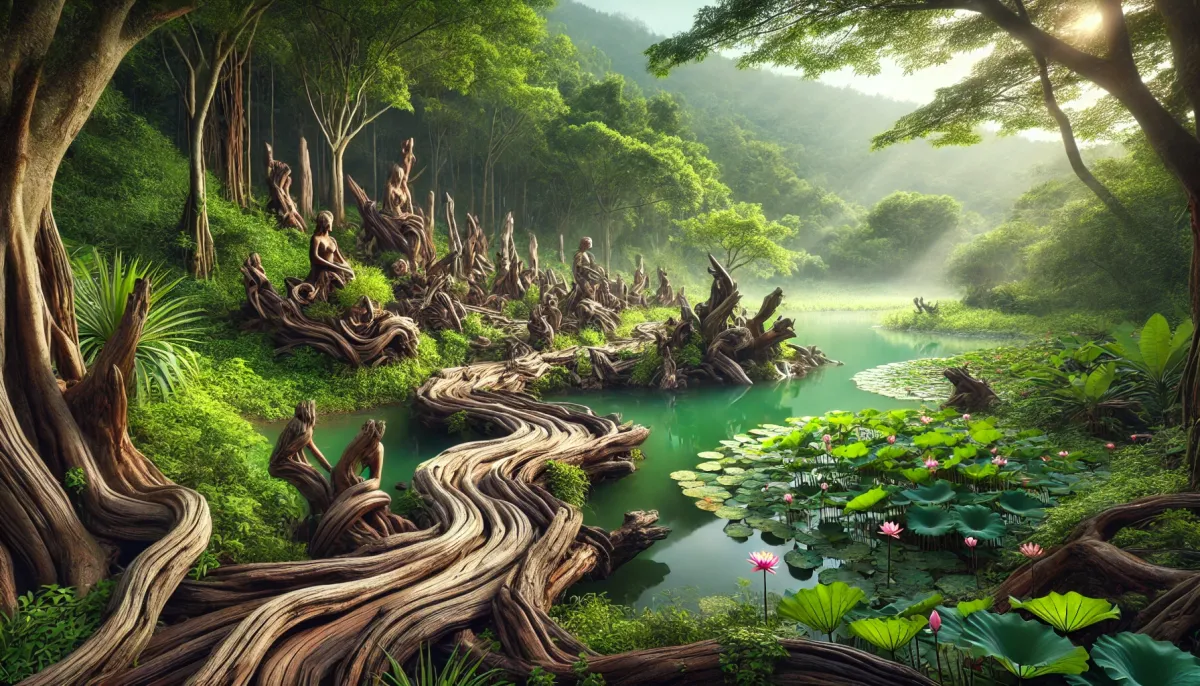Hey everyone, Mark here! As a seasoned backpacker with a penchant for exploring Asian cities, I've recently returned from a fantastic trip to Taiwan. While many travelers flock to the bustling metropolises of Taipei and Kaohsiung, I decided to venture off the beaten path and explore some of the island's hidden gems. One such gem is the Dongshi Forestry Culture Park in Taichung, a place that truly exceeded my expectations.
A Blast from the Past: The History of Dongshi
My second stop in Taichung was the Dongshi Forestry Culture Park. Taiwan boasts several famous logging sites, including Alishan, Taiping Mountain, and Baxian Mountain, all established during the Japanese colonial era. What makes Dongshi unique is that it was established during the Nationalist government's rule, its roots tracing back to 1959 when, with US aid, the "Taiwan Dasheshan Forestry Co., Ltd." was formed. The logging operation was centered in the Dasheshan mountain range. At its peak, the Dongshi mill was the largest in Southeast Asia, sprawling across 28 hectares.
After logging operations ceased, the site was transformed into the Dongshi Forestry Culture Park in 2004. The Dasheshan logging area has also since been redeveloped into the Dasheshan National Forest Recreation Area.
A Walk Through Time: The Huanhu Trail
My primary focus today was the Huanhu (circular lake) Trail. This captivating trail is punctuated by driftwood sculptures created by artists from Taiwan and across the globe, including Japan and South Korea. I saw impressive specimens of camphor wood, remnants of the railway tracks (though the lumber was transported by truck, not rail, to the Dongshi mill's storage pond before being shipped out via the Fengshi Railway), and even a stunning wood carving of a pangolin family. The former storage pond is now a beautiful lotus pond, providing a serene backdrop to the trail.
The Huanhu Trail offers more than just scenic beauty. It showcases the ingenuity and artistry of many. Scattered throughout the surrounding woodlands are a variety of wooden sculptures crafted by both local and international artists. I even took a detour from the trail to admire a giant Taiwan redwood, the largest fallen redwood discovered in Taiwan, which was relocated to the park after being felled by Typhoon Herb in 1996.
Industrial Heritage: Glimpses into the Past
The park also preserves remnants of the sawmill. I saw the remains of the slicing warehouse – a byproduct of lumber production used for paper pulp – and what’s left of the boiler room and other machinery, all silent witnesses to a bygone era. Although a devastating fire in 2006 destroyed much of the mill, some structures remain. The large sawmill, completed in 1964, was once the second-largest in the world and the largest in Southeast Asia, boasting an annual output of 110,000 cubic meters of lumber. The mill utilized advanced logging techniques, including powerful chain saws, significantly increasing output compared to the Japanese era.
The park provides a fascinating look at the evolution of logging practices. Old photographs displayed throughout the park showcase the sawmill's massive scale and its operations.
More Than Just a Trail: A Complete Experience
The Huanhu Trail is truly exceptional. It’s remarkably similar to the trail at the Luodong Forestry Culture Park. Along the way, I discovered a charming mountain produce shop offering coffee and afternoon tea, beautiful lakeside viewing platforms, and even what appeared to be a former auto repair shop – essential for maintaining the truck fleet that transported the lumber. I also discovered a shop selling ten distinct Taiwanese teas, possibly a gift shop and restaurant combined. The trail itself is remarkably flat and easily accessible for wheelchairs and strollers.
The park also features unloading platforms where lumber from Dasheshan was slid into the storage pond, where it was submerged to prevent decay and insect damage. It’s a fantastic place for a leisurely stroll, and the circular viewing platform provided a perfect vantage point to soak in the scenery.
Key Details about Dongshi Forestry Culture Park:
| Feature | Description |
|---|---|
| Established | 1959 (as Taiwan Dasheshan Forestry Co., Ltd.) |
| Logging Cessation | 2004 (transformed into a culture park) |
| Main Attraction | Huanhu (circular lake) Trail, showcasing sculptures and industrial relics |
| Accessibility | Excellent; suitable for wheelchairs and strollers |
| Size | 28 hectares (original sawmill) |
| Storage Pond | 4 hectares, filled with water from the Dongshi Main Canal (part of Dajia River) |
My Verdict: A Must-See for Travelers to Taiwan
My visit to the Dongshi Forestry Culture Park was a highlight of my trip to Taiwan. It’s a place that seamlessly blends history, nature, and art, providing a truly unique and enriching experience. It’s perfect for those seeking a more relaxed and less crowded alternative to Taiwan's bustling cities. I highly recommend it to any English-speaking traveler looking for something different during their trip to Asia. Whether you’re a history buff, an art enthusiast, or simply someone who enjoys a peaceful walk in nature, the Dongshi Forestry Culture Park has something to offer. I especially enjoyed it during this time of year, but I'm not sure how it would fare during the summer months.







